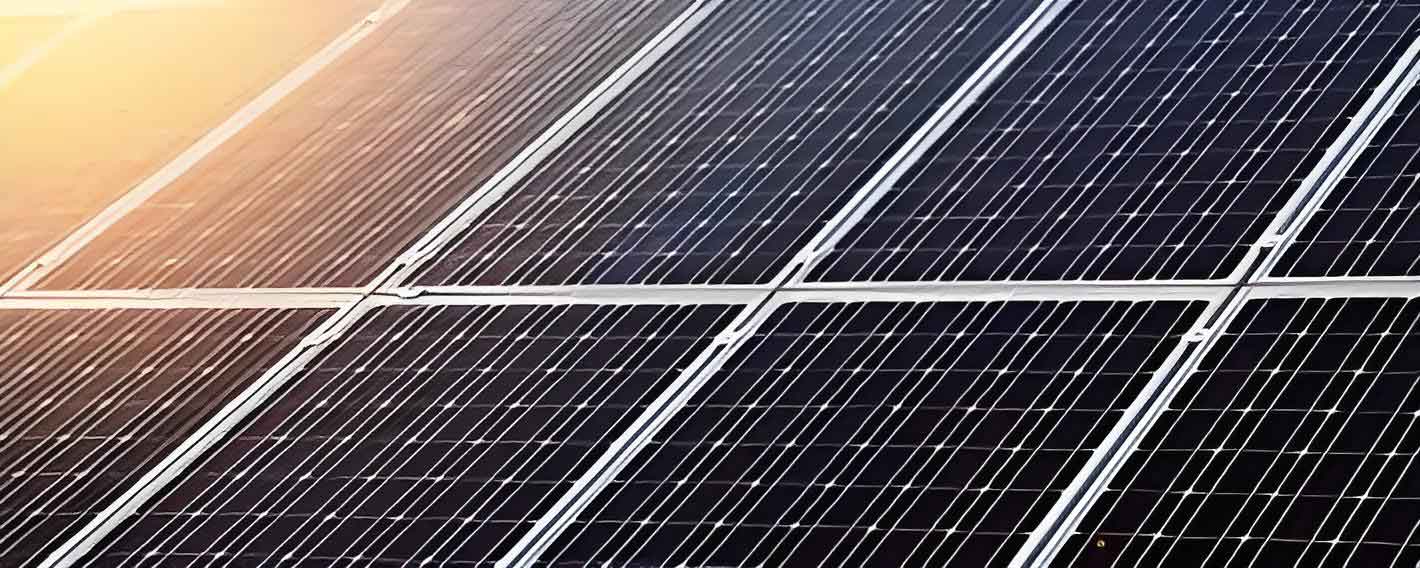Abstract
This study comprehensively examines the reflection and transmission characteristics of dust-covered photovoltaic panels and their economic implications on power generation. Theoretical modeling combined with experimental validation is employed to understand the impact of dust accumulation on photovoltaic panel performance. The research culminates in the development of a comprehensive solution for assessing the efficiency loss due to dust accumulation and optimizing panel cleaning schedules. Key findings include the derivation of equations for spectral reflectance and transmittance, analysis of power generation efficiency under varying dust conditions, and formulation of cleaning periodicity models aimed at minimizing costs or maximizing output.

Introduction
Photovoltaic panels have emerged as a pivotal technology for harnessing solar energy and contributing to the global energy transition. However, their performance is significantly impacted by dust accumulation on panel surfaces, resulting in reduced light transmission and lower power output. This study aims to address this issue by investigating the optical properties of dust-covered photovoltaic panels and their economic consequences, ultimately proposing optimized cleaning strategies.
Literature Review
Previous research has shown that dust accumulation leads to a reduction in photovoltaic panel efficiency, primarily due to increased reflectance and absorption of incident solar radiation. Studies have explored the effect of dust particle composition, size, and density on panel output [1, 2]. However, there is a lack of systematic models that integrate dust optical properties with economic analysis to optimize cleaning schedules.
Materials and Methods
Experimental Setup
The experimental setup comprised two main parts: a spectral measurement system and a photovoltaic panel output measurement system.
- Spectral Measurement System: Used to measure the spectral reflectance and transmittance of dust-covered glass samples, simulating photovoltaic panel cover glass. The system included a xenon lamp as the light source, a fiber optic spectrometer for spectral analysis, and dust-laden glass samples mounted on adjustable holders.
- PV Panel Output Measurement System: Employed to quantify the impact of dust accumulation on photovoltaic panel electrical parameters. The system included a solar simulator, photovoltaic panel, a digital multimeter for current and voltage measurements, and a data acquisition system.
Dust Samples
Dust samples were prepared according to different compositions (ratios 1, 2, and 3) based on literature data, simulating region-specific dust mixtures [3]. These samples were then applied to glass slides and PV panels to simulate dust accumulation.
Theoretical Modeling
Optical Properties of Dust-covered Surfaces
The spectral reflectance (( r )) and transmittance (( t )) of dust-covered surfaces were modeled using the Lorentz-Lorenz equation for effective refractive index and absorption coefficient, considering dust particle composition and geometry. For dense particle systems, the model accounts for multiple reflections and absorptions within the dust layer and the underlying PV panel structure.
For sparse particle systems, an area filling coefficient (( p_a )) was introduced to quantify the fraction of the PV panel surface covered by dust particles. The combined reflectance and transmittance of sparse dust layers were calculated as a weighted average of clean and dense layer properties:
tss=pa⋅tAD+(1−pa)⋅tclean
rss=pa⋅rAD+(1−pa)⋅rclean
where tAD and rAD are the transmittance and reflectance of a dense dust layer, and tclean and rclean are the corresponding values for a clean surface.
Results and Discussion
Spectral Reflectance and Transmittance
The experimental and theoretical reflectance and transmittance values for dust-covered glass samples are presented, respectively. The results show good agreement between the experimental and theoretical curves, validating the proposed model.
Impact on PV Panel Output
Dust accumulation was found to have a significant impact on PV panel output parameters, including short-circuit current (( I_{sc} )), open-circuit voltage (( V_{oc} )), and power output (( P_{out} )). these effects for dust ratio 2 under varying irradiances.
The results indicate that dust accumulation leads to a slight increase in Isc and a significant decrease in Voc, resulting in an overall reduction in Pout. The average power output ratio (dusty/clean) was found to be 0.65 for dust ratio 2, corresponding to a 35% power loss.
Power Generation Efficiency
The power generation efficiency (\eta \)) was calculated as the product of the optical transmittance (\( t \)) and the PV panel’s photoelectric conversion efficiency (\( \eta_{pe} \)). the variation of \( \eta with dust accumulation, indicating a decreasing trend with increasing dust density.
Economic Analysis
The economic impact of dust accumulation was assessed for a 20 MWp PV plant. Based on the observed power loss, the daily economic loss due to dust accumulation was calculated and is presented in Table 1.
| Dust Ratio | Area Filling Coefficient (( p_a )) | Daily Economic Loss (USD) |
|---|---|---|
| 1 | 0.10 | 2,400 |
| 2 | 0.30 | 4,200 |
| 3 | 0.50 | 6,000 |
Table 1: Daily Economic Loss Due to Dust Accumulation for a 20 MWp PV Plant
Optimization of Cleaning Schedules
Two optimization approaches were considered: minimizing cleaning costs (minimum cost cycle) and maximizing power output (maximum output cycle).
Minimum Cost Cycle
The minimum cost cycle (( \theta_{min} )) was derived by minimizing the total cost function, comprising cleaning costs (( C )) and power loss costs over a cleaning cycle:
thetamin=a22C
where a2 is the cost coefficient associated with power loss per unit time. For the 20 MWp plant, the minimum cost cycle was found to be 3.4 days.
Maximum Output Cycle
The maximum output cycle (( \theta_{max} )) was derived to maximize the net power output over a cleaning cycle. The optimal cycle was also found to be 3.4 days, indicating that both approaches yield the same optimal cleaning periodicity.
Conclusion
This study presents a comprehensive analysis of the optical and economic impacts of dust accumulation on PV panels. The developed theoretical model accurately predicts spectral reflectance and transmittance, and the experimental validation demonstrates its reliability. The study reveals significant power losses due to dust accumulation and quantifies these losses in economic terms. Furthermore, optimized cleaning schedules are proposed to minimize costs or maximize output, with both approaches yielding the same optimal cleaning periodicity. The findings have important implications for enhancing the performance and economic viability of PV power plants.
